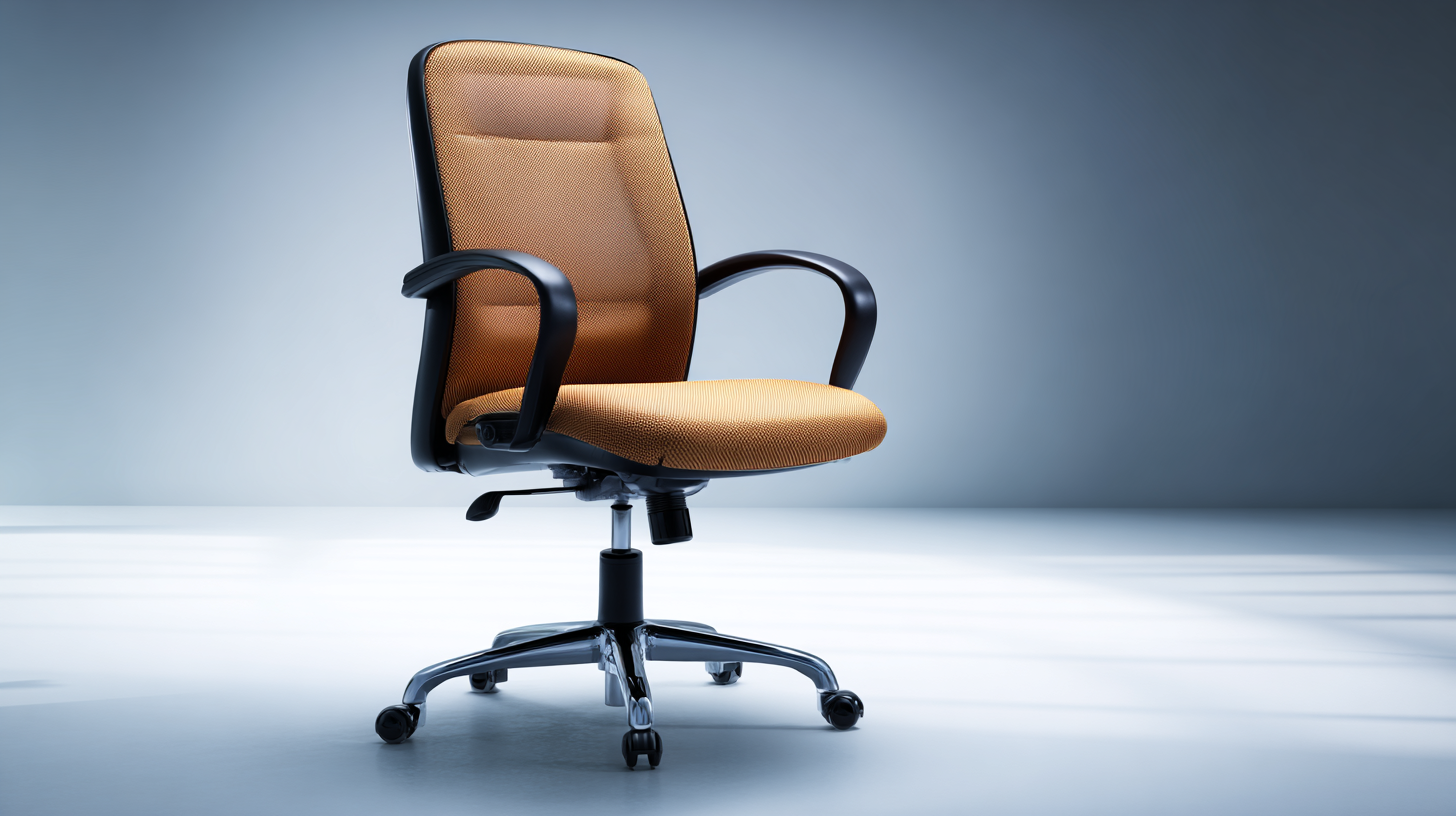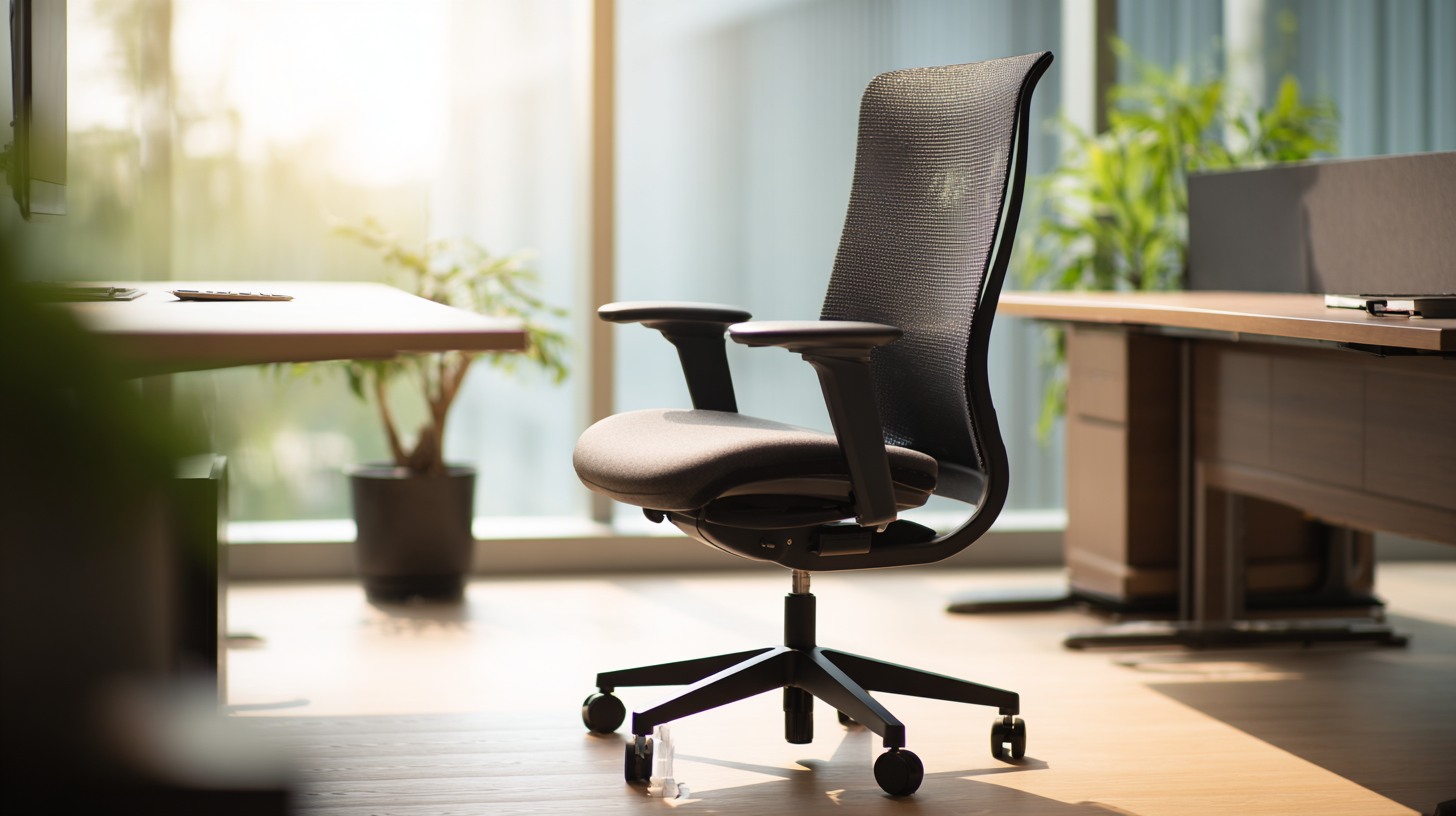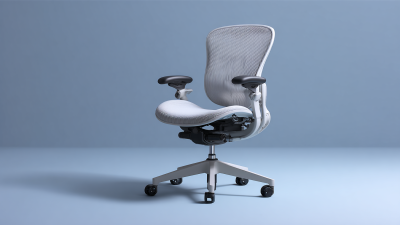Understanding the Health Benefits of an Ergonomic Desk Chair for Your Work Environment
In today's fast-paced work environment, the importance of an ergonomic desk chair cannot be overstated. With employees spending nearly 8 hours a day sitting, poor seating posture can lead to chronic pain and decreased productivity. According to a report by the World Health Organization, musculoskeletal disorders, often exacerbated by inadequate seating, account for a significant portion of workplace injuries. A well-designed ergonomic desk chair promotes proper posture and supports the natural curve of the spine, reducing strain and discomfort. Furthermore, the Global Wellness Institute highlights that investing in ergonomic furniture can lead to a reduction in absenteeism by as much as 30%, positively impacting overall workplace morale and efficiency. As companies increasingly prioritize employee well-being, understanding the health benefits of an ergonomic desk chair becomes crucial for fostering a productive and healthy work environment.

Benefits of Ergonomic Desk Chairs: Enhancing Comfort and Productivity
An ergonomic desk chair plays a pivotal role in enhancing both comfort and productivity in today's work environments. According to a study published by the Journal of Occupational Health Psychology, workers who use ergonomic chairs report up to a 25% increase in productivity, largely due to the reduction of discomfort and strain during long hours of sitting. The right chair supports healthy posture, alleviating back pain and neck strain, which are common complaints in office settings.
Tips for selecting an ergonomic desk chair include adjusting the seat height so that your feet are flat on the floor and your knees are at a 90-degree angle. Look for a chair with lumbar support that conforms to the natural curve of your spine. Additionally, consider models with adjustable armrests to maintain relaxed shoulders, allowing for smoother mouse movements and reducing the likelihood of repetitive strain injuries.
Integrating ergonomic furniture into workspaces not only fosters a healthier environment but also boosts overall employee satisfaction. A report from the Occupational Safety and Health Administration (OSHA) highlights that companies investing in ergonomic solutions can see a decrease in absenteeism by up to 60%, further emphasizing the importance of comfort in achieving workplace productivity.
The Impact of Ergonomic Seating on Employee Health: An Evidence-Based Analysis
The impact of ergonomic seating on employee health is profound and backed by substantial evidence. A report published by the Occupational Safety and Health Administration (OSHA) indicates that ergonomic office chairs can reduce the risk of musculoskeletal disorders (MSDs) by up to 60%. These conditions, which include back pain and repetitive strain injuries, are prevalent in modern workplaces due to long hours of sitting and improper posture. By providing adjustable features such as seat height, lumbar support, and armrest positioning, ergonomic chairs promote optimal posture and blood circulation, ultimately enhancing overall comfort and productivity.
Furthermore, a study conducted by the American Journal of Epidemiology found that employees who utilize ergonomic seating report a 25% decrease in discomfort related to prolonged sitting. This is crucial considering that the modern workforce is increasingly sedentary, with many professionals spending more than eight hours a day at their desks. Investing in ergonomic furniture not only supports physical health but also contributes to mental well-being, as comfort levels have been shown to correlate with increased job satisfaction and performance. By prioritizing ergonomic seating, organizations can foster a healthier work environment that benefits employees and the overall workplace culture.
Understanding the Impact of Ergonomic Seating on Employee Health
Key Features of Ergonomic Desk Chairs: Supporting Posture and Wellbeing
When selecting an ergonomic desk chair, understanding its fundamental features is essential for promoting good posture and overall well-being. One of the key characteristics of an ergonomic chair is lumbar support, which is designed to conform to the natural curve of the lower back. This support prevents slouching and reduces the risk of developing back pain, especially during long hours of sitting. Additionally, adjustable seat height and depth allow users to customize their seating position according to their body type, further enhancing comfort and posture.

Another vital feature is the chair's ability to swivel and its mobility, which encourages movement and flexibility throughout the workday. A chair with armrests that can be adjusted in height or width helps to alleviate shoulder strain, allowing the arms to rest comfortably. Moreover, breathable fabric and cushioning promote airflow and reduce fatigue, ensuring that users remain comfortable and focused. By integrating these features, an ergonomic desk chair significantly contributes to a healthier and more productive work environment.
Statistics on Ergonomic Office Furniture: Reducing Workplace Injuries and Absenteeism
The significance of ergonomic office furniture is increasingly evident as studies show that workplace injuries and absenteeism can be substantially minimized through proper ergonomics. According to recent market trends, the global ergonomic furniture industry is anticipated to exceed a valuation of USD 22,211.8 million by 2024, reflecting the surging focus on employee health and productivity. This growth is driven by the recognition that ergonomic solutions can alleviate common work-related musculoskeletal disorders (WMSDs), which cost the Australian economy over $55 billion annually. Such injuries, primarily affecting the back and neck, are prevalent yet preventable through the use of ergonomic office chairs and adjustable sit-stand desks.
Incorporating ergonomic furniture not only reduces the risks of injuries but also enhances overall workplace efficiency. Organizations prioritizing ergonomics have reported noticeable improvements in productivity levels and reductions in absenteeism rates. The successful implementation of ergonomic solutions has enabled various sectors to combat their workers' MSD injury risks effectively. For instance, industries that have adapted ergonomic practices have experienced lowered healthcare costs, reinforcing the notion that investing in workplace health pays off significantly in the long run.
Adopting Ergonomic Practices: Cost-Benefit Analysis for Businesses and Employees
Adopting ergonomic practices in the workplace, such as utilizing ergonomic desk chairs, can yield significant cost-benefit advantages for both businesses and employees. According to a report by the Occupational Safety and Health Administration (OSHA), workplaces that implement ergonomic changes can reduce the incidence of musculoskeletal disorders (MSDs) by approximately 30%. This reduction not only fosters a healthier work environment but also minimizes the financial burden associated with employee injuries, which, as per the National Safety Council, costs U.S. businesses around $170 billion annually in lost productivity and healthcare expenses.

From the employee perspective, the benefits are equally compelling. A study conducted by the University of California found that properly adjusted ergonomic chairs can enhance productivity by up to 15% by reducing discomfort and fatigue during long hours of work. Additionally, employees report increased job satisfaction and lower stress levels when provided with ergonomic solutions. These improvements translate into a more engaged workforce, which is critical in today's competitive business landscape. Overall, the investment in ergonomic practices presents a compelling case for businesses looking to enhance employee well-being and boost overall performance.
Related Posts
-

Top Strategies for Selecting the Best Ergonomic Desk Chair for Your Workplace
-

7 Essential Tips for Choosing the Best Home Office Furniture to Boost Productivity
-

How to Identify Top Quality Suppliers for the Best Desk Chair
-

The Ultimate Guide to Selecting the Best Home Office Chair for Productivity and Comfort
-

Challenges in Finding the Best Office Chair for Global Buyers
-

How to Choose the Perfect Modern Executive Desk for Your Home Office Setup
